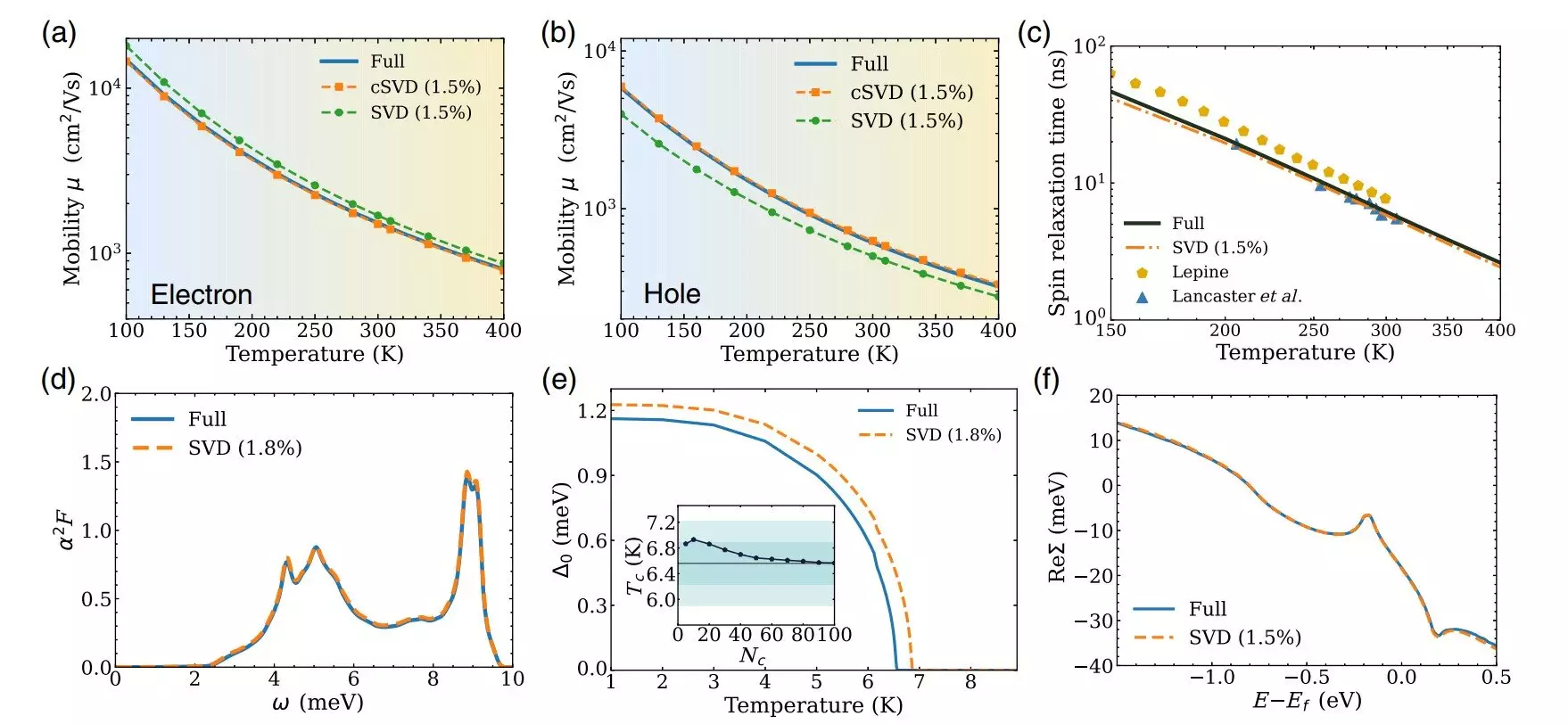The field of materials physics is constantly evolving, with researchers striving to understand how electrons interact and move within new materials. Questions about the flow of electrical current, superconductivity, and the preservation of electron spin are all at the forefront of research in this area. A recent study by a team of scientists at Caltech has brought significant advancements in this field, simplifying complex calculations and accelerating them by a factor of 50 or more. This breakthrough opens up new possibilities for exploring the behaviors and properties of materials at a fundamental level.
The researchers at Caltech have developed a data-driven method that revolutionizes the way electron interactions in materials are computed. By simplifying the computational matrices used to represent these interactions, the team has been able to achieve remarkable results with only 1 to 2% of the data typically required for such calculations. This not only speeds up the process but also reveals the most critical interactions that dictate the properties of materials. The accuracy of the compressed matrices in computing electron-phonon interactions is nearly as high as the full calculation, reducing computing time and memory usage significantly.
Traditionally, materials physicists have followed two main approaches to understanding materials at a fundamental level. The first approach focuses on building minimal models to simplify the system and provide a qualitative understanding of materials. The second approach, which the Caltech team emphasizes, involves using quantum mechanical calculations to study materials properties with quantitative accuracy. This latter method requires large computers and extensive computational matrices, making it highly time-consuming. The new data-driven approach bridges the gap between these two approaches, allowing for more efficient calculations while maintaining accuracy.
The key to the success of the Caltech team’s method lies in applying singular value decomposition (SVD) to electron-phonon interactions in materials. This technique, commonly used in fields like image compression and quantum information science, allows researchers to disentangle the electronic and vibrational components in a matrix of interactions. By retaining only the essential interactions represented by the leading singular values, the team achieves substantial compression of the matrices, resulting in faster and more efficient calculations. The method provides valuable physical intuition about electron interactions in materials, shedding light on dominant interactions that were previously unknown.
The implications of the Caltech team’s research are significant for the field of materials physics. By compressing matrices related to electron-phonon interactions using the SVD method, researchers can accurately calculate properties such as charge transport, spin relaxation times, and superconductor transition temperatures. The team is now working on extending these calculations to a broader range of material interactions and developing advanced computational models that were previously deemed impossible. By integrating the new SVD method into open-source software packages, such as Perturbo, the research community will have access to faster and more efficient tools for predicting material properties.
The groundbreaking work by the Caltech team in data-driven materials physics is paving the way for new discoveries and advancements in the field. By simplifying complex calculations and revealing crucial interactions within materials, researchers can now explore the properties of materials with unprecedented speed and accuracy. The integration of this method into open-source software will further democratize access to cutting-edge research tools, fostering collaboration and innovation in materials physics.


Leave a Reply